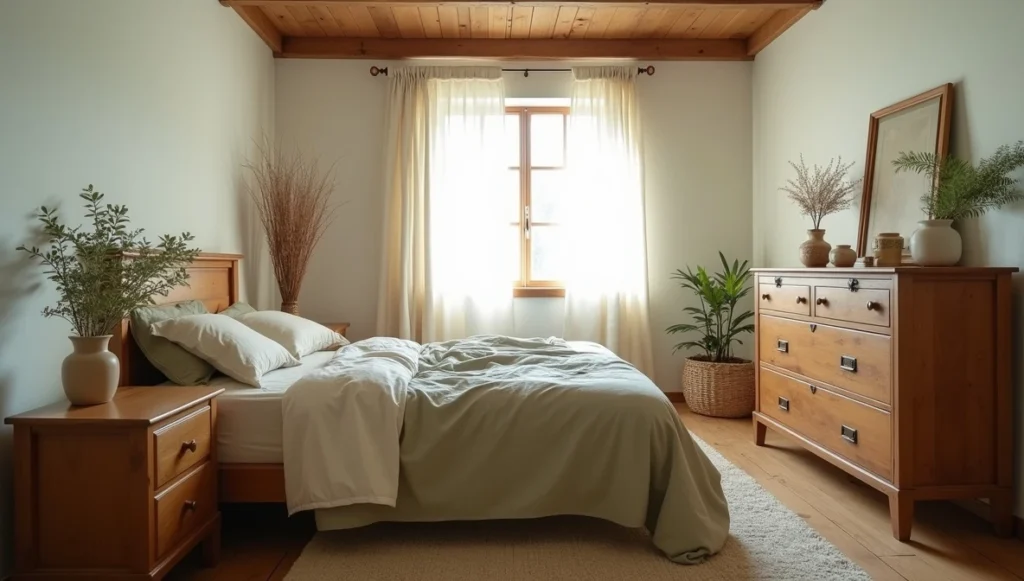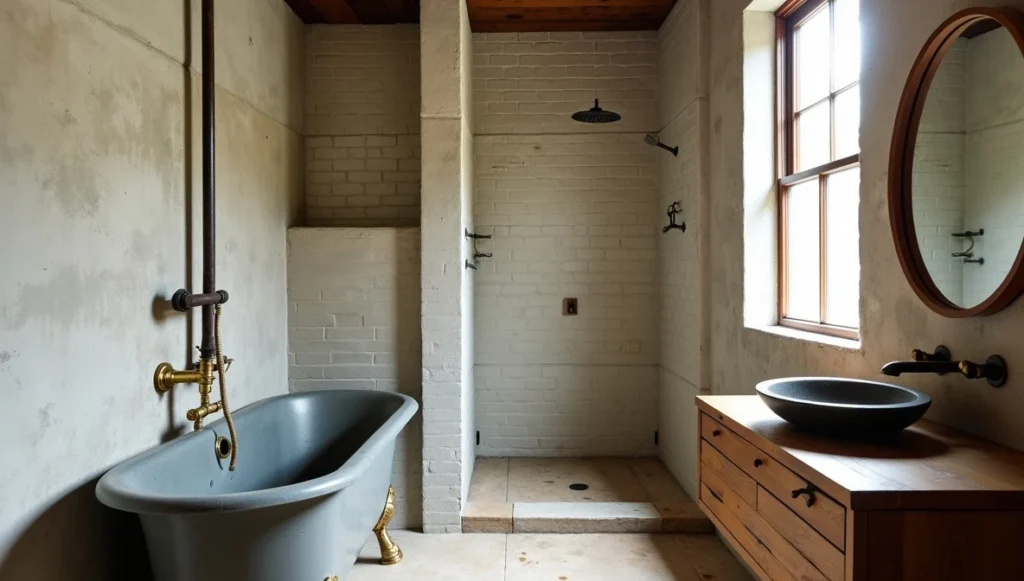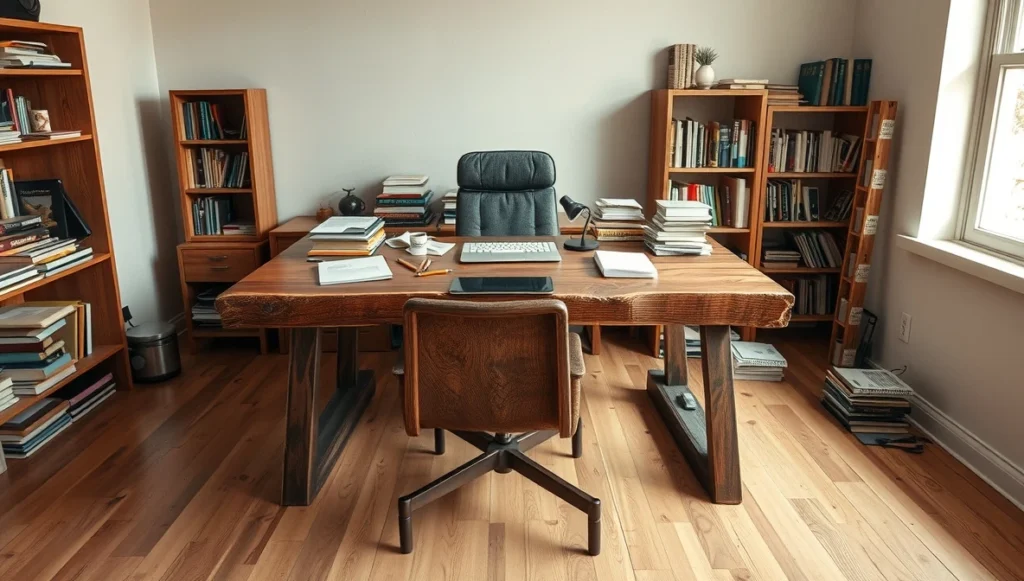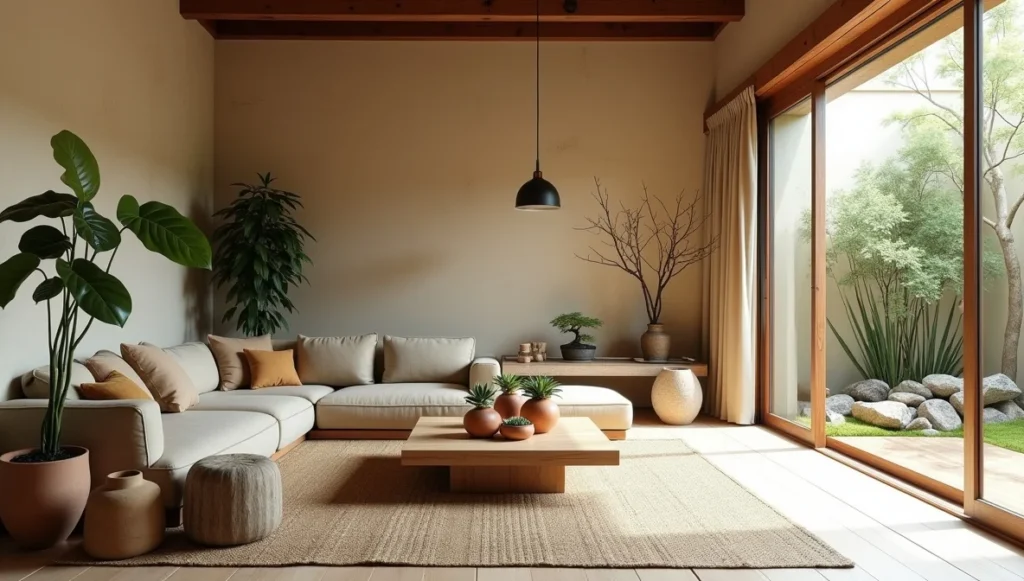- Wabi-Sabi Interior Design: The Japanese Way of Finding Beauty in Imperfection - September 6, 2025
- Japanese Zen Interior Design: Why Less Really Is More - September 4, 2025
- Modern French Interior Design: Why Everyone’s Falling in Love (And How to Bring It Home) - September 3, 2025
Table of Contents
My grandmother never threw anything away. Her kitchen table had scratches from fifty years of chopping vegetables, the paint around her windows was worn thin from opening and closing them thousands of times, and every chair was different – collected over decades from yard sales and hand-me-downs. After she died, my family wanted to “fix up” the house before selling it.
I sat in that kitchen one last time and realized something. All those imperfections told the story of a life well-lived. The scratches weren’t damage – they were memories. The worn paint wasn’t neglect – it was evidence of someone who loved natural light. Those mismatched chairs weren’t a design mistake – they were perfect together because they’d been chosen with care over time.
That’s when wabi-sabi stopped being just a Japanese word I’d heard in design school and became something I actually understood.
Here’s the lovely kitchen I’m talking about.

What This Actually Means
Wabi-sabi gets explained in fancy ways, but it’s pretty simple. Instead of trying to make everything look new and perfect forever, you appreciate things as they age and change. That coffee ring on your wooden table? It’s not something to sand out – it’s proof you’ve had good conversations over morning coffee.
The whole thing started with Japanese tea ceremonies centuries ago. Instead of showing off with perfect, expensive tea bowls, people began choosing simple ones with cracks and imperfections. Sometimes they’d even repair broken bowls with gold, making the repair part of the beauty rather than trying to hide it.
We could use more of that thinking today. Everything around us is supposed to look Instagram-perfect all the time, which is exhausting and basically impossible if you actually live in your house.
What It Looks Like in Real Life
Wabi-sabi homes feel different when you walk into them. There’s no pressure to keep everything pristine because pristine isn’t the goal. Comfortable is. Honest is. Real is.
Colors come from nature – the warm brown of tree bark, the gray of river stones, creamy white like old eggshells. Nothing too bright or attention-grabbing, just colors that feel peaceful year after year.
Textures matter too. Linen that gets softer every time you wash it. Wood that shows its knots and grain. Stone that looks like stone, not like it’s trying to be something else. Materials that get better with age instead of falling apart.
I stumbled on a home recently that brought all of this to life – take a look.

How to Do This Room by Room
Living Room
My living room happened by accident, which is probably the most wabi-sabi thing about it. The sofa is linen that’s faded unevenly where the afternoon sun hits it. Instead of moving it or getting new curtains, I learned to love how it shows the path of sunlight through our windows.
The coffee table came from an old barn – it’s got nail holes and water stains and tells the story of its previous life. Friends put their feet up on it without worrying about leaving marks because it already has plenty.
Plants don’t need to be perfect specimens here. The fiddle leaf fig that lost half its leaves last winter? It stays. The peace lily that leans toward the window? That’s just how it grows. Dead-heading flowers becomes optional when you appreciate seed pods as much as blooms.

Kitchen
Kitchens are where wabi-sabi really makes sense because they’re all about use and function. My cutting board has a groove worn into it from twenty years of chopping onions in the same spot. It could be sanded smooth, but why? That groove is exactly where my knife wants to go.
The backsplash is handmade tile that’s not quite perfect – some pieces stick out a little, the grout lines wander slightly. It cost more than machine-made tile but tells a better story about the hands that shaped it.
Open shelving works well here because you can see and grab what you need quickly. Everyday dishes get displayed with their little chips and scratches – evidence of meals shared and enjoyed.

Bedroom
Bedrooms in wabi-sabi homes prioritize sleep over style. Linen sheets that wrinkle beautifully, furniture made from solid wood that shows its age gracefully, curtains that filter light gently instead of blocking it completely.
Our dresser belonged to my wife’s grandmother. It has rings from water glasses, scratches from daily use, and one drawer that sticks. Every furniture refinisher who’s seen it has offered to “fix” these problems. But erasing them would erase all the people who lived with this piece before us.
Colors stay close to earth tones – warm whites, soft grays, muted greens. Nothing that shouts for attention when you’re trying to wind down or wake up peacefully.

Bathroom
Small bathrooms especially benefit from this approach because there’s no room for stuff that doesn’t work. Natural stone that shows water spots, wood vanities that develop character from daily use, mirrors that might develop slight foxing over time.
When we renovated our bathroom, we left the old cast iron pipes exposed instead of boxing them in. They’re developing a natural patina that looks better than any paint job would. The subway tile we chose has slight variations – handmade rather than machine-perfect.
Brass fixtures start out shiny but mellow over time to a warm, aged finish. Most people see this as something to prevent with constant polishing. We see it as character development.

Home Office
My desk is a slab of walnut with the natural edge left on. It has knots, small cracks that have been stabilized but not hidden, and grain that wanders unpredictably. Working at something that feels alive beats a generic surface any day.
Books pile up naturally where I’m using them. Pencils wear down to different lengths. The chair has developed an impression where I sit most often. All evidence of actual work happening, not a magazine photo of what an office should look like.
Papers accumulate in real piles, not perfectly organized filing systems. Bookmarks stick out at odd angles. Everything shows signs of being used rather than just displayed.

Why This Works Now
Social media has convinced us that everything should look perfect all the time. Our homes are supposed to be magazine-ready, our lives curated like advertisements. Wabi-sabi offers an alternative that’s both more honest and more sustainable.
Instead of constantly replacing things that show wear, you learn to see that wear as character. Instead of hiding the evidence that people live in your home, you celebrate it. Instead of chasing trends that’ll look dated in five years, you choose things that become more beautiful over time.
There’s also something deeply relaxing about coming home to a space that doesn’t judge you. When your house accepts its own imperfections, it’s easier to accept your own.
Getting Started Without Buying Anything
Look around your house right now. What are you trying to hide or fix that might actually be beautiful if you saw it differently? That mug with the chip – maybe it fits your hand perfectly because of how it’s worn. The wooden spoon with the darkened handle – maybe that darkening shows how much good cooking it’s done.
Stop replacing things the minute they show wear. Let your favorite chair develop an indentation. Let books pile up where you actually read them. Display dishes you use regularly instead of ones too precious for daily life.
When you do buy new things, think about time. Will this material age gracefully or just look shabby? Will these colors still feel soothing in ten years? Will this piece become more beautiful as it shows signs of use, or will you want to replace it as soon as it’s not pristine?
The goal isn’t creating a museum of old, broken things. It’s creating a home that gets more beautiful as you live in it, that tells the story of your life instead of trying to look like someone else’s.
After a decade and a half of helping people design their homes, I’ve learned that the spaces we love most are the ones that show evidence of being lived in. The scratches and fades aren’t problems to solve – they’re stories worth keeping.
